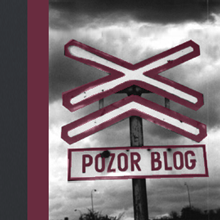Polling numbers for August are in:
http://spreadsheets0.google.com/ccc?key=pdhlCClsiyAPaeKoxMfAaXQ&hl=en.
This month we’ve got polling results from two sources: the monthly UVVM and, for a change, MVK, which only occasionally publishes results during non-campaign periods. The UVVM shows almost no change from last month (which is normal); the MVK is fairly consistent with UVVM, showing somewhat lower support for Smer, SNS, HZDS and KDH and somewhat higher support for SDKU and SMK. In this it bears somewhat more resemblance to past results from FOCUS, but unfortunately we don’t (yet) have FOCUS results for this month (and we may not since FOCUS often takes August off).
The overall picture is simple. A traffic jam of 5 parties around the 10% mark with Smer cruising high above. This is no different from last month.
The lack of change may be significant. It is, of course, important not to read too much into fluctuations (or absence thereof) from monthly polls (in the last year SMK’s support has fluctuated between 9% and nearly 12% despite an essentially fixed voting population). The absence of a much change in August, however, is noteworthy since the leading government party, Smer, faced its first clear scandal during this period in the form of an employment ministry subsidy to a firm that formerly employed the current minister herself, despite the firm’s arrears in other payments to the social insurance system. While not the kind of thing that brings down governments, the media coverage of the issue raised the coverage of clientelism–even Fico used the word in his denial. Timing is important here, since news of the scandal emerged on August 4, near the end of MVK’s polling period, but at the middle of UVVM’s. It may be that this kind of news actually takes a few days of accusation-trading to develop some legs and to affect the marginal voters, but it’s still interesting that even then the effect on Smer was 0.2 percentage points (though of course there could have been a greater drop that was disguised by a coincidental survey error in a positive direction). Is the absence of a cliff-hanger itself a form of cliff-hanger? Tune in in September.




